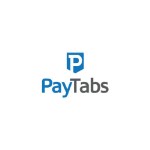Organizations are constantly seeking ways to streamline processes and enhance productivity. One significant area that has undergone a transformative change is employee onboarding.
Traditionally, onboarding involved many paperwork, manual processes, and countless hours of orientation sessions. However, with the advent of technology, especially digital onboarding, organizations are now embracing a more efficient and seamless approach to integrating new employees into the workplace.
The Shift from Paper to Digital
The traditional onboarding process was notorious for its paperwork-heavy nature. From filling out numerous forms to manually tracking progress, the entire process was time-consuming and prone to errors.
Digital onboarding, on the other hand, leverages technology to automate and digitize these processes. This shift not only reduces the administrative burden but also significantly enhances the overall efficiency of onboarding.
Streamlined Documentation
Digital onboarding eliminates the need for extensive paperwork by allowing employees to fill out essential documents electronically. New hires can complete forms such as tax forms, direct deposit information, and confidentiality agreements online, reducing the reliance on physical documents.
This not only saves time but also minimizes the chances of errors and missing information, ensuring that all required documentation is complete and accurate.
Enhanced Compliance and Security
Ensuring compliance with various regulations and maintaining the security of sensitive information is a critical aspect of onboarding. Digital onboarding platforms often come equipped with built-in compliance checks and encryption features, providing a secure environment for handling personal and confidential data.
This helps organizations adhere to legal requirements and fosters trust between employers and employees.
Accelerated Training and Orientation
One of the significant advantages of digital onboarding is the ability to deliver training and orientation materials in a more efficient and engaging manner. Instead of lengthy, in-person orientation sessions, organizations can leverage multimedia content, interactive modules, and e-learning platforms to convey information.
This not only accelerates the onboarding process but also caters to different learning styles, making the assimilation of information more effective.
Real-time Progress Tracking
Digital onboarding platforms enable HR professionals and managers to track the progress of new hires in real time. This level of visibility allows for better coordination and ensures that no crucial steps are missed during the onboarding journey.
Additionally, it provides valuable insights into the overall efficiency of the onboarding process, allowing organizations to identify areas for improvement and optimization.
Improved Employee Experience
Beyond the administrative advantages, digital onboarding contributes significantly to enhancing the overall employee experience. A positive onboarding experience sets the tone for an employee's tenure with an organization and can impact job satisfaction and retention.
Personalized Onboarding Journeys
Digital onboarding platforms often allow organizations to create personalized onboarding journeys based on the role, department, and individual needs of the new hire. This tailored approach ensures that employees receive relevant information and training, making them feel valued and well-prepared for their specific roles.
Increased Engagement and Interaction
Digital onboarding opens avenues for increased engagement and interaction between new hires and their colleagues.
Virtual introductions, team-building activities, and online collaboration tools facilitate connections, even in remote or hybrid work environments. This helps create a sense of belonging and integration from the very beginning of an employee's journey with the organization.
Accessibility and Flexibility
With digital onboarding, employees can access onboarding materials and information from anywhere, at any time. This flexibility is particularly beneficial for remote or globally distributed teams.
New hires can familiarize themselves with organizational policies, procedures, and culture at their own pace, contributing to a smoother transition into their new roles.
Seamless Integration with HR Systems
Digital onboarding platforms often integrate seamlessly with existing HR systems, such as applicant tracking systems (ATS) and human resource information systems (HRIS). This integration streamlines data management and ensures consistency across various HR processes, from recruitment to onboarding.
By centralizing information within a unified system, organizations can eliminate duplicate data entry, reduce manual errors, and improve data accuracy.
On-demand Access to Resources
In addition to completing essential paperwork and training modules, digital onboarding provides new hires with on-demand access to a wealth of resources. These resources may include employee handbooks, company policies, benefit information, and FAQs.
By empowering employees to access information when they need it, organizations foster a culture of self-sufficiency and empower individuals to take ownership of their onboarding experience
Conclusion
The power of digital onboarding in the workplace is undeniable. The shift from paperwork to digital processes not only streamlines administrative tasks but also enhances the onboarding process's overall efficiency, compliance, and security.
Moreover, by prioritizing a positive and personalized employee experience, organizations can set the stage for increased engagement, satisfaction, and long-term retention.
As technology continues to evolve, the role of digital onboarding will likely become even more integral to the success of organizations in attracting, integrating, and retaining top talent. Embracing these digital advancements not only positions companies at the forefront of innovation but also demonstrates a commitment to creating a modern, efficient, and employee-friendly workplace.
For more, keep following PayTabs!






Comments